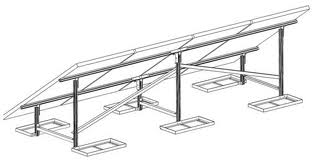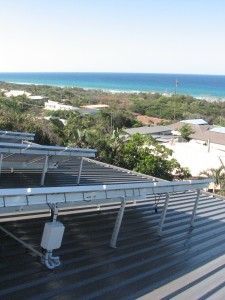 Crystalline solar PV panels produce the most power when they are pointed directly at the sun. In Australia, solar modules should face north for maximum electricity production. The orientation of the panels will often have a greater effect on annual energy production than the angle they are tilted at. The current feed-in tariff structures in Australia result in east-west-facing systems generating an optimal return on investment, especially if the property utilising solar feed-in tariffs has low electricity usage in the middle of the day.
Crystalline solar PV panels produce the most power when they are pointed directly at the sun. In Australia, solar modules should face north for maximum electricity production. The orientation of the panels will often have a greater effect on annual energy production than the angle they are tilted at. The current feed-in tariff structures in Australia result in east-west-facing systems generating an optimal return on investment, especially if the property utilising solar feed-in tariffs has low electricity usage in the middle of the day.
 In some cases the roof that the panels are to be mounted on is flat and requires a tilt frame to point the panels directly at the sun. This means better generation as well as better cleaning of the panels when it rains.
In some cases the roof that the panels are to be mounted on is flat and requires a tilt frame to point the panels directly at the sun. This means better generation as well as better cleaning of the panels when it rains.
Tilt frames come in many forms and sizes. When tilting a solar panel you need to ensure that it is strong enough to handle the wind loads that the panels array, mounting structure and your roof are subjected to. A tilted system exposes a large surface area for wind to collide with. Be sure the installer is using an approved product and is installing it according to the manufacturers’ guidelines for your wind region.
As with flush mounted systems there is specific tilt leg spacing required on different roofs to ensure that the structure withstands the wind loads in the area.
